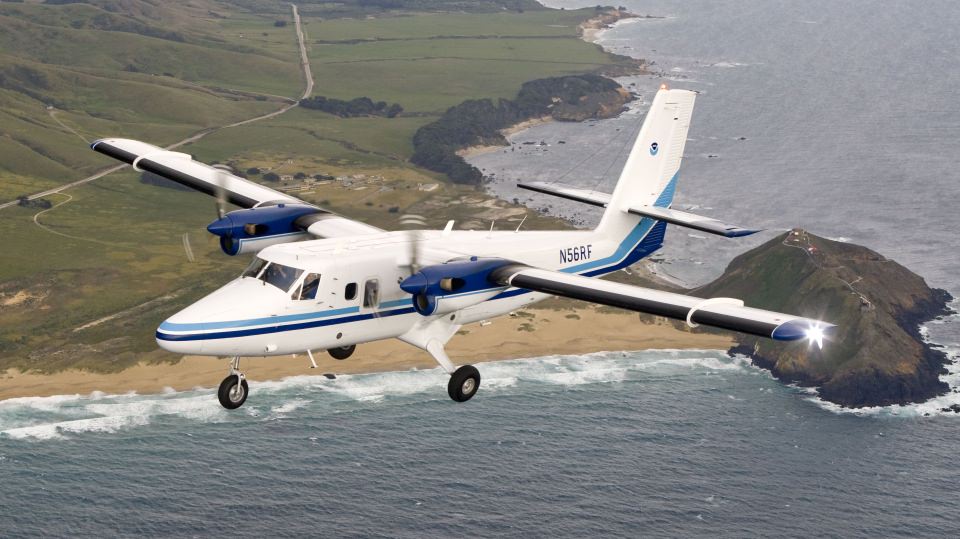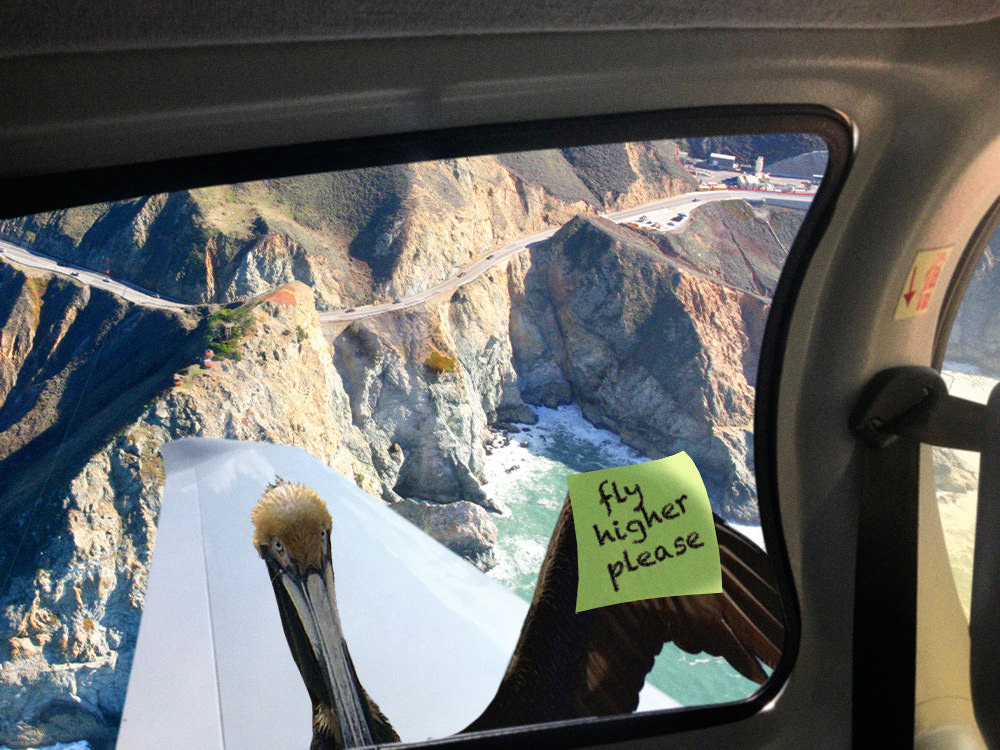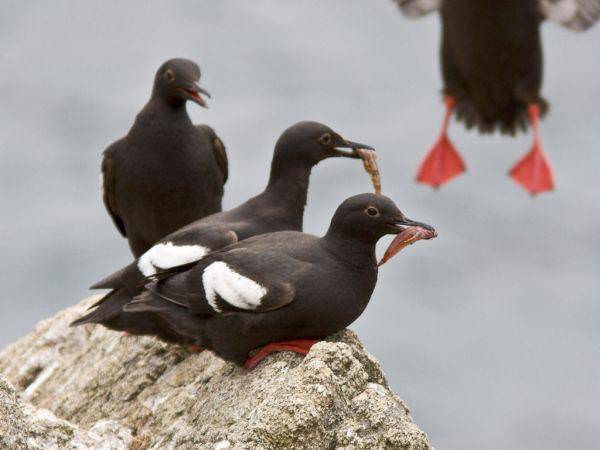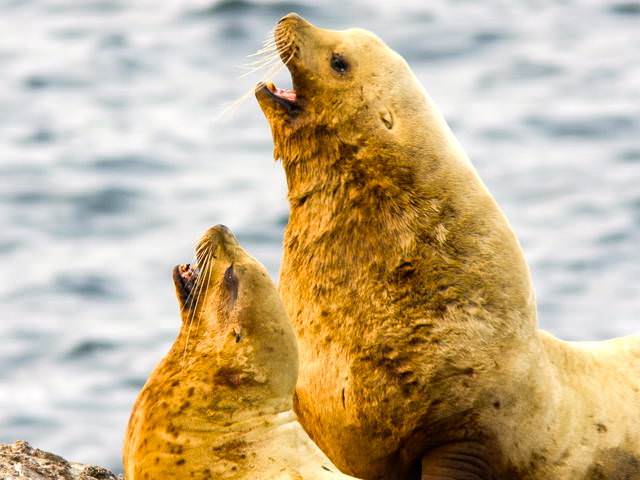Pilots: Know Before You Go!

Overflight regulations within Olympic Coast, Greater Farallones, Monterey Bay and Channel Islands National Marine Sanctuaries require that motorized aircraft maintain minimum altitudes above specified coastal waters. Failure to comply with these minimum altitude limits is presumed to disturb marine mammals and seabirds and is a violation of federal regulations for the sanctuaries.
Overflight Regulations
Minimum altitude limits have existed within west coast national marine sanctuaries for many years, and in February 2012 a Final Rule standardized National Oceanic and Atmospheric Administration (NOAA) overflight regulations across the sanctuaries to reflect a consistent and clear regulatory approach. Once the regulatory modifications went into effect, the Federal Aviation Administration (FAA) posted a specific notice to pilots on aeronautical charts about NOAA's regulated overflight zones within the marine sanctuaries.
The NOAA regulated overflight zones (NROZs) are discrete "designated areas" within each of four west coast national marine sanctuaries where motorized flight below minimum altitude limits are presumed to disturb wildlife in violation of federal wildlife protection regulations enforced by NOAA. The boundaries of these areas appear on aeronautical charts as solid magenta lines paired with a series of magenta dots off the coastline and islands. Notices appear on the charts in text boxes adjacent to the zone markings and identify them as "designated areas" of a sanctuary where NOAA regulations apply.
You can get more information about the zones, minimum altitude thresholds, and relevant chart notices by clicking on the select menu options in the right sidebar of this webpage. To view a table of the NROZ minimum altitude thresholds at each marine sanctuary and instructions for requesting a permit for low-altitude flight within a NROZ, click here. A list of frequently asked questions about the zones is available by clicking on the "Frequently Asked Questions" ("FAQ") menu option in the right sidebar of this webpage.
Why Fly Higher?

Fly High for Safety, Fly High for Wildlife
The FAA's recommended best operating practice is to ALWAYS fly at least 2000 feet above ground level (AGL) over ALL national marine sanctuaries, wildlife refuges, parks and other noise sensitive environments (see AC 91-36D). This protects both the pilot and nearby wildlife.
Should trouble occur, flying the coast at 2000 feet AGL allows pilots plenty of reaction time to plan a safe landing. Additionally, studies of the FAA's Wildlife Strike Database have shown that a majority of birdstrikes occur at altitudes under 1000 feet AGL - so flying high can reduce risk of bird strikes.
Direct flyovers or multiple passes over sensitive wildlife areas can harm wildlife and be unsafe for pilots. These NOAA overflight regulations pertain to all motorized aircraft.

Seabirds
Successful breeding is critical for seabird populations. Seabirds have low reproductive rates and are susceptible to climate variability, prey availability and oceanic conditions. Seabirds form dense breeding colonies on offshore rocks, isolated sea stacks, islands and steep mainland cliffs. These areas are relatively void of land predators. However, low flying aircraft disrupt seabird nesting activities and cause adults to flee from and abandon their nests, which can break and knock eggs from the nest, or leave eggs and chicks exposed to predators. Monitoring data has shown that high levels of disturbance, including frequent mild disturbances or a single severe event, can cause complete breeding failure of a seabird colony, and/or result in colony abandonment.

Marine Mammals
Marine mammals react negatively to low-flying aircraft. Circling or multiple passes are disruptive to the natural behavior of marine mammals. Whales that are milling or resting at the surface are most sensitive. Seals and sea lions haul out on intertidal ledges, beaches and rocky inlets to nurse their pups, heal wounds and rest. Low overflights can frighten marine mammals into the water. During pupping season, low flying aircraft can cause a mother and pup to become separated which can lead to starvation for the pup, or result in stampedes which may cause trampling and death.
Protect wildlife, stay safe, and stay within the law

